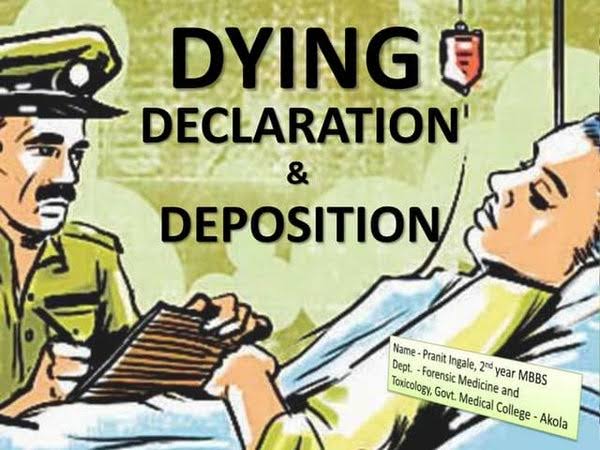Gobinda Chandra Chatterjee, J.@mdashConvicted of an offence of murder u/s 302 IPC of her own children and sentenced to life imprisonment in connection with Sessions Trial No. 1 of 1974 by the Sessions Judge, Cooch Behar, the accused appellant, Bimala Sarkar has filed this jail appeal on the ground inter alia that she was falsely implicated in this case by her neighbours who wanted to grab her immovable property. Before the learned Sessions Judge the prosecution case stood as follows :-
Bimala Sarkar is a beggar-woman. Her husband had some lands and a thatched hut. About 3 years before the incident her husband sold away all his lands excepting the thatched structure and left the village for good. Bimala had no means to maintain herself and her two babies - a son Gopal by name aged 1 year and a daughter named Tulshi aged 3 years. They were so much poverty striken that they had to beg from door to door. Sometime they had to live without food for days together with the result that all of them were almost reduced to skeleton. Prior to the incident, Bimala had nothing to feed her babies and the babies had no other alternative than to bite their mother for food. This compelled the mother to put a rope around the neck of both Gopal and Tulshi causing thereby their instant death by way of strangulation and when the children thus breathed their last the mother dag earth and kept the dead bodies buried under the earth within the compund of her own hut. On the allegations as aforesaid Bimala was tried for offences of causing murder of her children u/s 302 I.P.C. and also for causing disappearance of evidence u/s 201 I.P.C, The learned Sessions Judge found her not guilty of the latter offence. Bimala was however was found guilty of the offence of causing murder of her babies.
Before us Shri Jaiswal, the learned Advocate for the accused appearing as amicus curiae has contended that there is absolutely no evidence on the record as to when where and how the act of murder was committed and that the act complained of is simply a conjecture not based upon any- legal evidence. The contention of Shri Jaiswal has great force.
2. It would transpire from the charge that no specific time has been put in the charge itself as to when actually the two babies were murdered. The charge is most vague and indefinite in that respect. The charge states inter alia that between 15th December to 18th December, 1973 the act was committed. We do not know on which date during day or night the murder was committed. There were two babies. Who was put to death in the first instance? It cannot be stated that the two babies were dealt with and finished simultaneously. The mother would need some time to put, rope around the neck of one of her babies and it would certainly take sometime for the exoiry of the victim. Was the next babe done to death on the next date? Did the mother pause for some time to ponder over the situation? Who amongest the two babies the son and the daughter was put to death first? The evidence on record is completely silent with regard to these questions.
3. Even so there is no evidence on the record as to where exactly the offence or murder was committed. Was the murder effected within the hut or without? We do not know. It might well be that the two children were murdered outside the village all together. There is no sworn testimony on the record that the act of murder was performed at such and, such time and at such and such place. The manner in which the life of the two babies was taken away has not also been disclosed in evidence on the record. The only incriminating evidence on the record is that Bimala Sarkar gave out before some of her neighbours that she had killed heir babies. Haran, P.W. 1, Nemai, P.W.5, Dwijen P.W. 6 are these neighbours. Against Dwijen a suggestion was put in cross-examination that he wanted to grab the property left by San-kar the husband of Bimala. The other two neighbours'' Haran and Nemai appear to be close associates of Dwijen. All these neighbours are day labours. Pagalrani, the eldest daughter of Bimala used to work as a maid-servant in the house of Dwijen. All the aforesaid four witnesses have merely stated that Bimala had given out in their presence that she had killed her babies. Save and except this vague arid indefinite assertion by Bimala there is nothing on the record to show when how and under what circumstances the two babies were put to death one after another.
4. The evidence adduced by the aforesaid four witnesses is not also worthy of credence. For it would transpire from the F.I.R. Ext. 3 that the informant was Haran P.W.1. This Haran in his evidence stated that Bimala told him in presence of Others that she had killed her children. This very Haran while lodging the F.I.R. did not disclose that the confession was so made by Bimala. The story of making the extra judicial confession thus appears to be clearly an after thought. If really Bimala had made the confession then Haran would have mentioned that very important thing in the sacred report. Learned Sessions Judge it appears was swayed by the evidence of Pagalrani. P.W. 4, the eldest daughter of Bimala. Pagalrani''s evidence however, is not worthy of credence-In her evidence she denied that she had stated before I.O. that her mother had been suffering from fever for some days prior to the incident. This piece of evidence namely suffering of Bimala from fever for some days is very important and it is a pointer to the underlying truth of the case. For it might as well be that the mother was completely bed-ridden for days together and that the two babies not being able to procure any food breathed their last out of sheer starvation.
5. Assuming for the sake of argument that Bimala had stated before the witnesses, that she had killed her babies, it does not yet follow that this extra judicial confession, is sufficient in law to convict the victim mother. We have seen that this confession is most vague indefinite and devoid of material particulars. After all we should remember that the two babies were Bimala''s own and that being unable for some reasons or other to procure food for her babies she had held herself responsible for the catastrophe. The mouring mother purhaps could do nothing but to curse herself before her neighbours. It is however one thing to say that. the mother was ultimately responsible for not procuring adequate food for her babies and it is quite another and different thing all together to say-that the mother put rope around the neck of her babies and there by put them to death herself. The facts and circumstances of the case in our opinion do not suggest and satisfy for a moment that the mother did actually commit the heinous offence. Where- an unfortunate mother is accused of murdering her babies and is convicted solely as in this case on the extra judicial confession alleged to have been made by herself, the whole of her confessional statement in our opinion should not be vague indefinite and lacking in material particulars thereby depriving the Court''s power and duty to go deep into the matter and adjudge for itself as to whether the alleged confession could have been really made in the overall facts circumstances and background of the case.
6. Mr. Jaiswal has invited our attention to the evidence of the village Chow-kidar, P.W. 7 Dhaneswar. His evidence has bi-fold importance. First of all this witness was present along with Haran, Nemai and others in the hut of Bimala. He however never said that Bimala made any extra judicial confession in their presence. The Second important material which we get in his evidence is that Bimala was found surrounded by 8/9 female folk of the area at the time when they visited her hut. In his evidence the I.O. has stated that he did not examine this Dhaneswar nor any of the female folk of the neighbouring houses. In our opinion this female folk if examined would have constituted very material witnesses for the prosecution. We believe that in their presence the mourning mother must have given out the detailed particulars of the incident namely, how where and under what manner -the babies had to embrace death. Indeed the beggar woman would have hardly given out the whole truth of the case before the male P.Ws. The prosecution therefore, has this great infirmity namely the non-production of the women folk of the locality. Where the victim mother is in a state of utter agony and mouring and where she is found surrounded in her own hut by a good number of women folk of her own village, that women folk would naturally constitute very material witnesses for the prosecution and wilful non-production of such important witnesses before whom the mother was expected to unfold the truth in detail should be construed in our opinion as fatal to the prosecution.
7. Nothing now remains on the record excepting the Doctor''s evidence, the Doctor who held the post-mortem examination of the babies. He is P.W.2 Dr. A. Ah. His testimony is that boyid bones of both the babies were fractured and that they had ligature mark. According to the Doctor their death may be due to strangulation. The Doctor is however sure that fractures and ligature mark may as well be caused by a fall. The doctor''s evidence closely scrutinised goes to support, the defence line of argument raised by Mr. Jaiswal to the effect that the two babies had simply died out of sheer property and starvation and at last by a fall in some form or other. The fall was very probable seeing that the hut of Bimala was completely wall-less (vide P.W. 1 examination in chief). We have seen that the prosecution case consists of two parts viz. 1) the act of murder and 2) the act of concealment of the dead bodies. Now so far as the evidence of concealment or disappearance of evidence is concerned, the learned Sessions Judge found Bimala not guilty. State has not filed any appeal as against that finding of the learned Sessions Judge. For the remaining offence u/s 302 IPC we have seen that there is no credable evidence on the record to establish the guilt of the mother beyond all reasonable doubt. This appeal therefore will succeed. Before we close, we must record with thanks the services rendered by Sri Jaiswal. We should also recorded here that the learned State-lawyer Mr. Maitra conceded before us the fact that she was unable to find suitable materials on the record to support the judgment of the trial court. The appeal stands allowed. The ace-used-appellant is found not guilty of the offence u/s 302 IPC. The judgment of conviction and sentence as passed by the larned Sessions Judge stands set aside and the accused is set at liberty at once.

